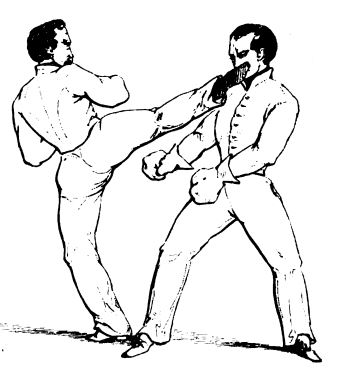It's not widely known that the first documented MA/combat sport to combine Asian and European fighting styles was actually created by an Englishman, E.W. Barton-Wright, in the year 1899. That's nearly fifty years before Kajukenbo, seventy years before Jeet Kune Do and ninety years before the MMA phenomenon took off.
"Bartitsu" combined two forms of ko-ryu jujitsu, Kodokan judo, scientific boxing, French savate and walking-stick fighting into a "gentlemanly art of self defense" that was also tested in mixed-style competition against champion wrestlers. Barton-Wright's Bartitsu Club in London pioneered the concept of women's self defense classes and the art was also written into the Sherlock Holmes stories.
If Bartitsu had survived, the international MA scene of the past 100 years might have been very different.
http://en.wikipedia.org/wiki/Bartitsu for details, and if anyone is interested, I'd be happy to get a Bartitsu discussion underway on this Forum.
Devon
"Bartitsu" combined two forms of ko-ryu jujitsu, Kodokan judo, scientific boxing, French savate and walking-stick fighting into a "gentlemanly art of self defense" that was also tested in mixed-style competition against champion wrestlers. Barton-Wright's Bartitsu Club in London pioneered the concept of women's self defense classes and the art was also written into the Sherlock Holmes stories.
If Bartitsu had survived, the international MA scene of the past 100 years might have been very different.
http://en.wikipedia.org/wiki/Bartitsu for details, and if anyone is interested, I'd be happy to get a Bartitsu discussion underway on this Forum.
Devon


